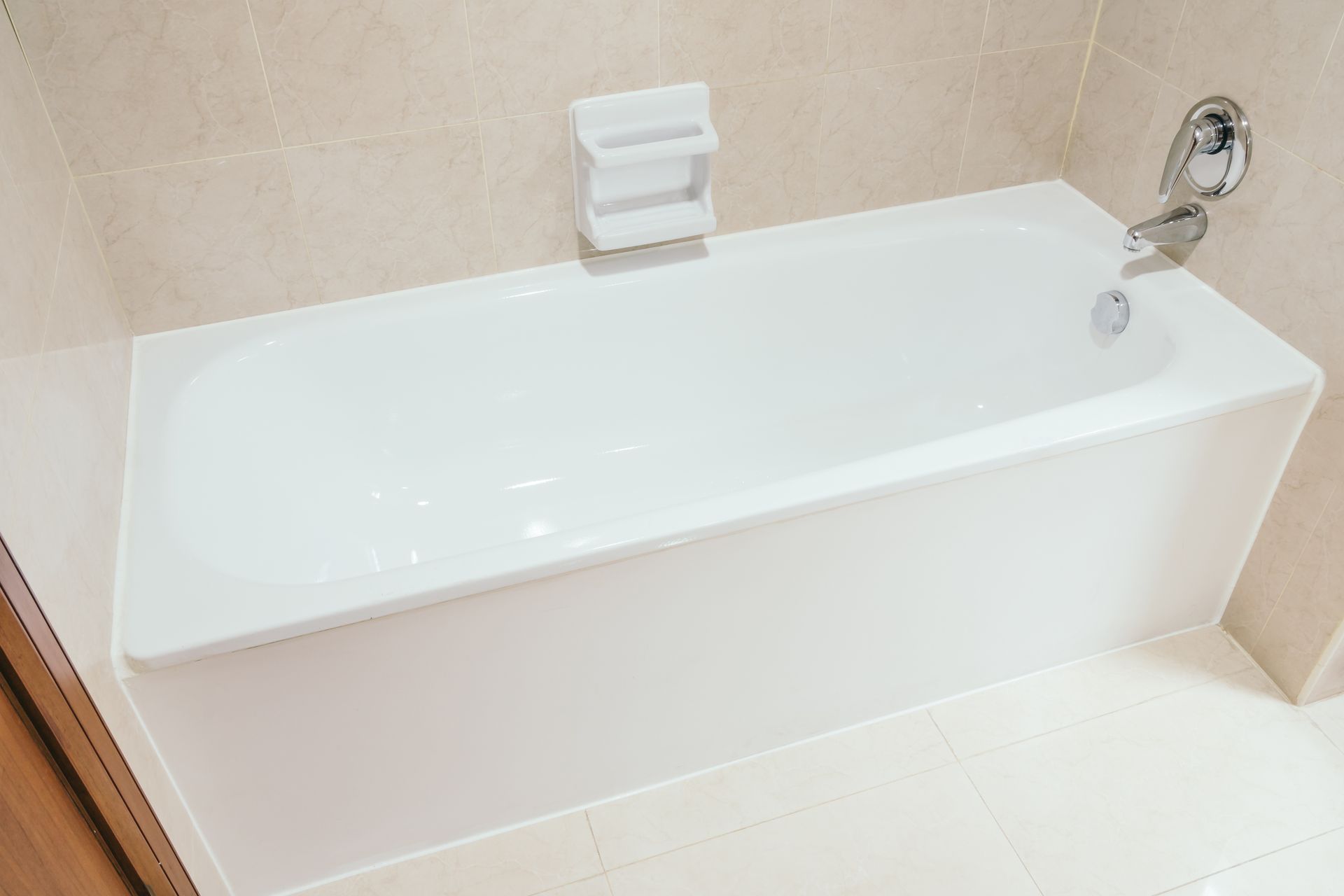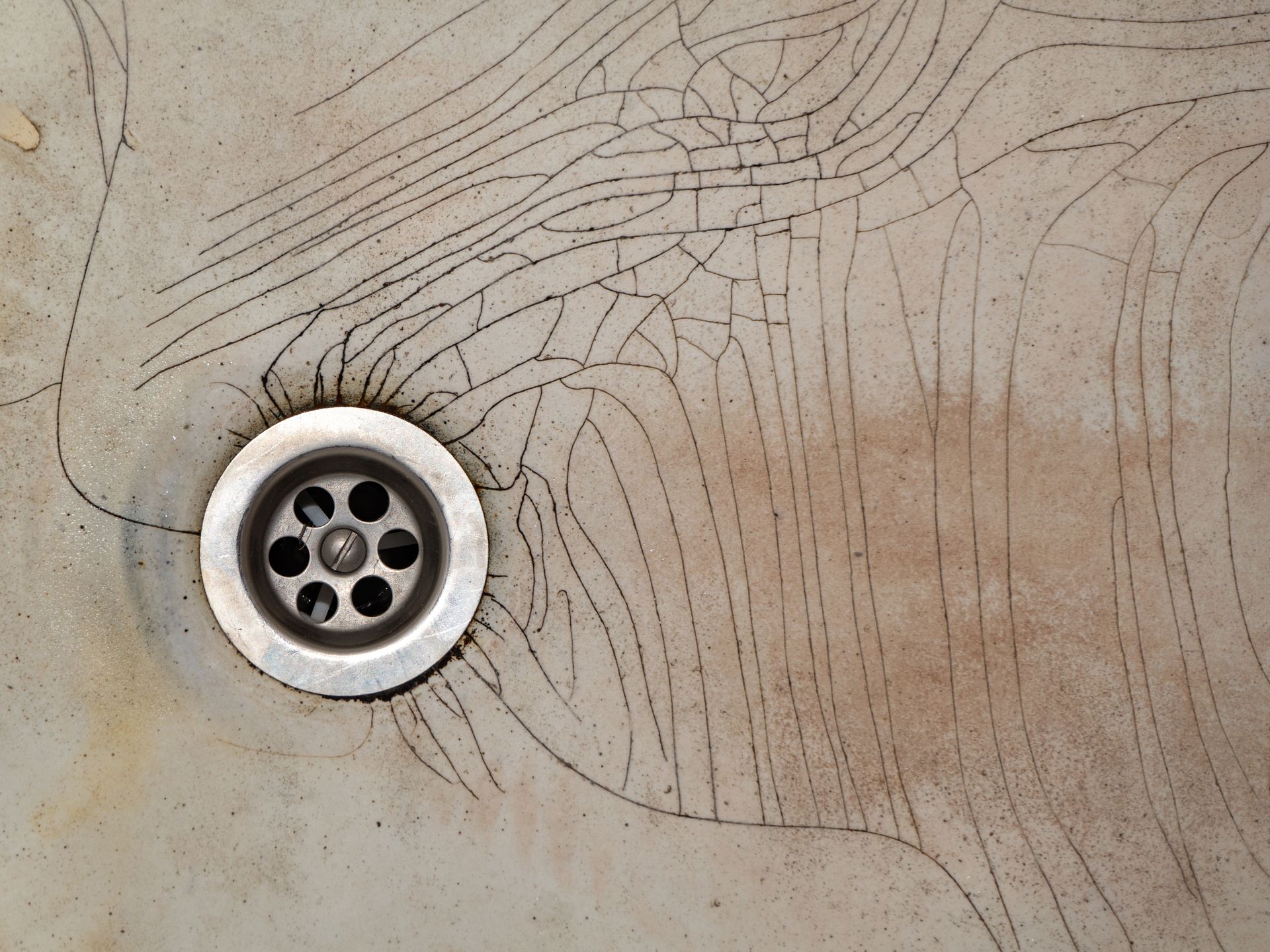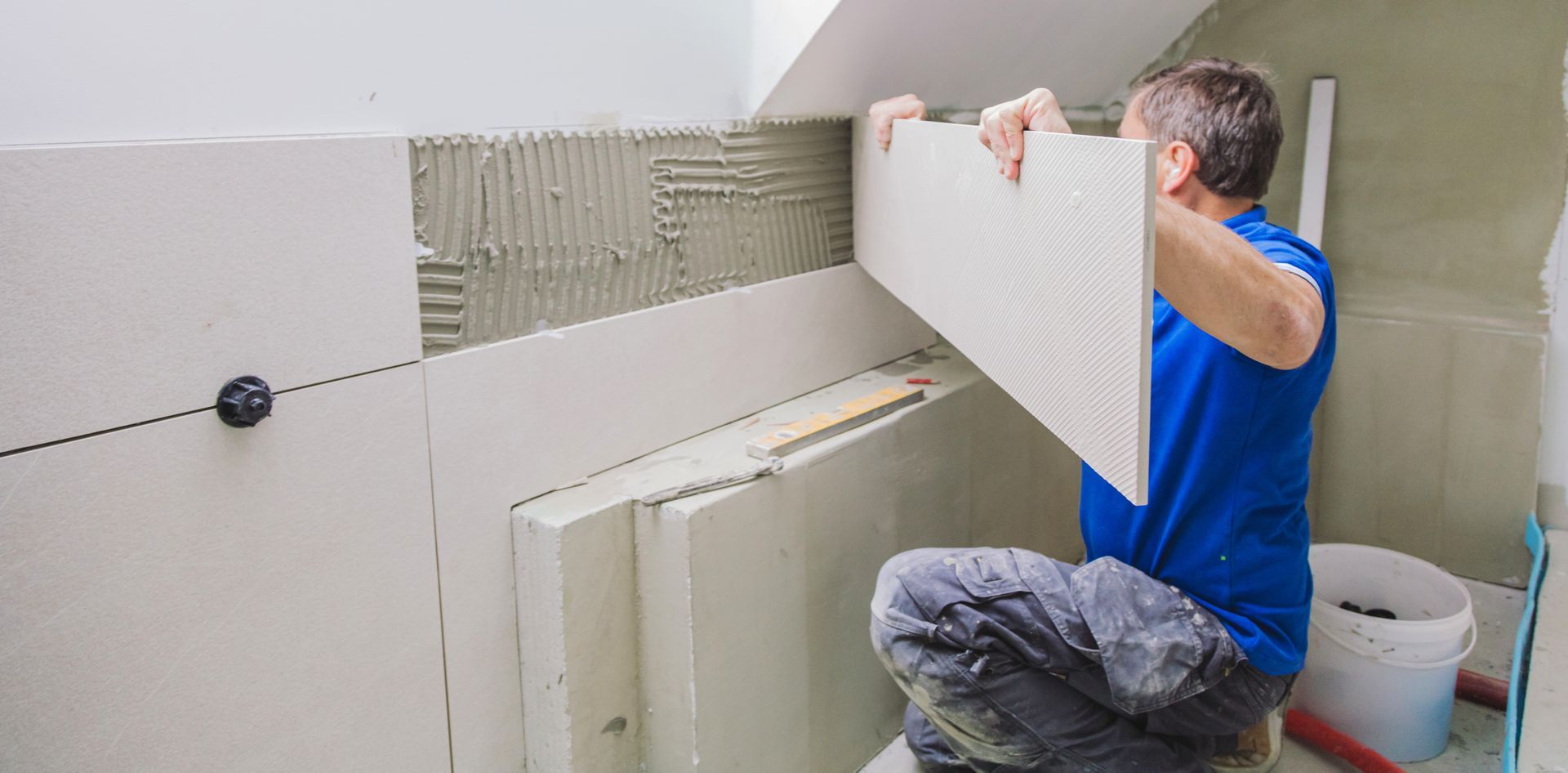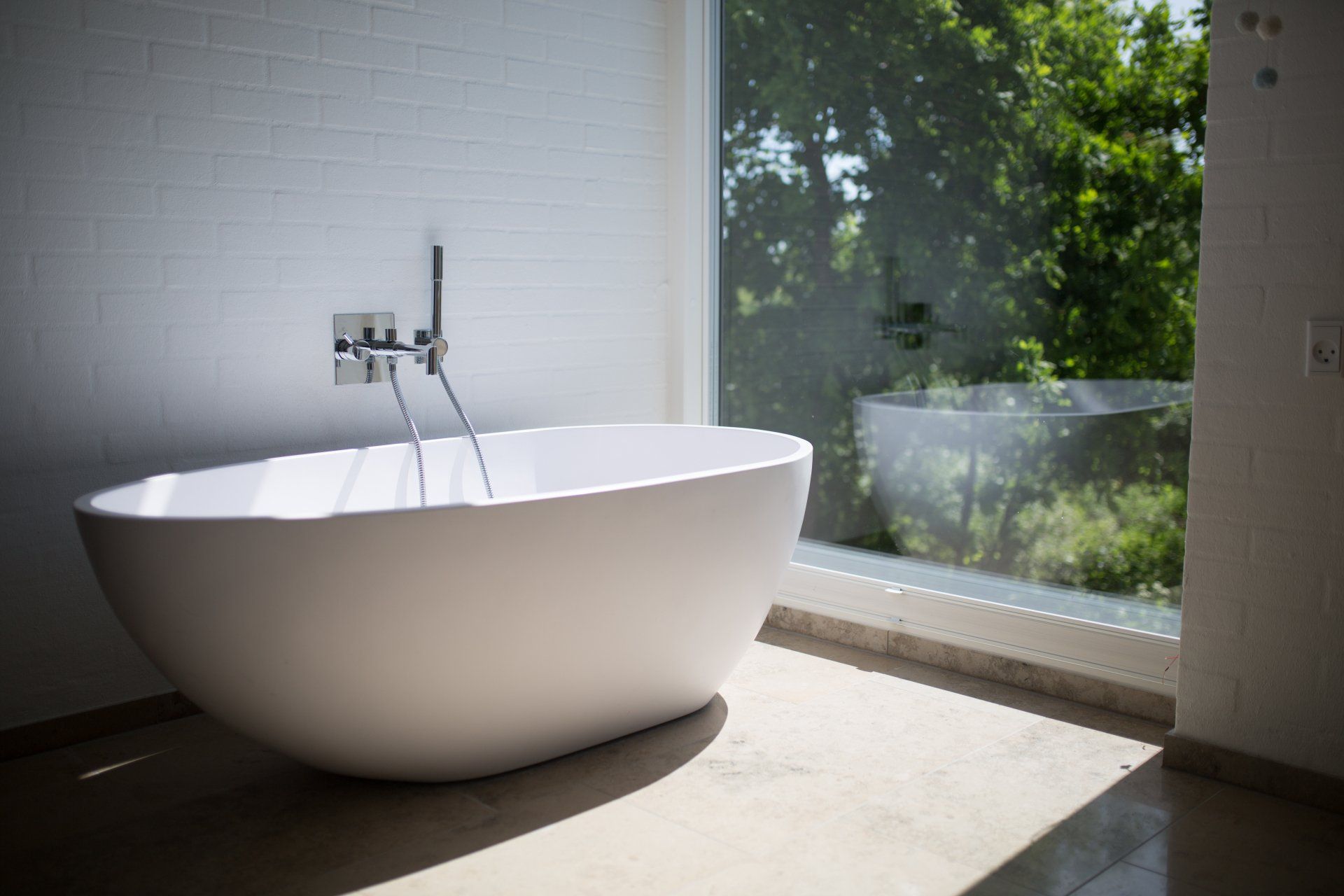Why Do Bathtubs Crack? Understanding Common Causes and How to Repair Your Damaged Tub
Few things can be as frustrating as discovering a crack in your bathtub. Not only can it detract from the aesthetic appeal of your bathroom, but it can also lead to water leakage, potential structural damage, and a host of other problems. However, fret not! In this comprehensive guide, we will delve into the causes of bathtub cracks, the potential consequences they can have, and most importantly, the solutions to repair them. So, if you're dealing with a cracked bathtub, read on to equip yourself with the knowledge you need to tackle this issue head-on.
Topics:
- Understanding the main causes of bathtub cracks
- Types of bathtub cracks
- Common repair methods to fix bathtub cracks
- Repair vs. replace - what is the best long term solution
Understanding What Causes a Cracked Bathtub

Bathtub cracks can arise from a variety of factors, such as regular wear and tear, exposure to harsh chemicals, and improper installation. Some reasons a tub may crack include:
- Poor Installation.
One of the primary causes of bathtub cracks is improper installation. If the bathtub was not installed correctly or if the supporting framework is inadequate, it can lead to stress points and eventual cracking. This can occur due to insufficient reinforcement or improper alignment during installation. Over time, the added weight and pressure on these weak points can cause cracks to develop. - Structural Stress
Bathtubs are subjected to various types of stress during their lifetime. Excessive weight placed on the bathtub, such as when standing or jumping on it, can lead to cracks. Additionally, dropping heavy objects or accidentally hitting the surface forcefully can cause localized stress points that result in cracks. Structural stress can also arise from inadequate support beneath the bathtub or improper weight distribution. - Temperature Fluctuations
Temperature fluctuations play a significant role in the development of bathtub cracks. When exposed to extreme temperature changes, the materials in the bathtub expand and contract. Over time, this repeated expansion and contraction can weaken the structural integrity of the bathtub, making it prone to cracking. Fluctuations can occur due to hot water usage, rapid temperature changes in the bathroom, or exposure to direct sunlight. - Natural Wear and Tear
As with any object, bathtubs are subject to wear and tear over time. As the bathtub ages, the materials may become brittle, making them more susceptible to cracks. Continuous use, cleaning with harsh chemicals, and exposure to water and moisture can contribute to the gradual deterioration of the bathtub's surface, increasing the likelihood of cracks. - Material Quality
The quality of the bathtub material itself can also impact its susceptibility to cracking. Lower-quality materials or those that are not adequately reinforced may have inherent weaknesses that make them more prone to cracking. Choosing a high-quality bathtub made from durable materials that can withstand the demands of regular usage and temperature fluctuations is important.
Types of Tub Cracks

Bathtub cracks can manifest in different forms, each indicating varying levels of severity and potential consequences. Here are the common types of bathtub cracks you may encounter:
- Hairline Cracks: These thin, shallow cracks that may appear on the surface layer of the bathtub. They are typically small and barely noticeable, resembling fine lines. Hairline cracks are often cosmetic in nature and may not immediately lead to water leakage or structural issues. However, if left unaddressed, they can deepen and widen over time, compromising the integrity of the bathtub.
- Surface Cracks: Surface cracks are slightly more significant than hairline cracks. They are slightly deeper and wider, extending beyond the surface layer of the bathtub. Surface cracks may still be primarily cosmetic, but they have an increased risk of water penetration. If water seeps into the cracks, it can cause damage to the underlying layers, potentially leading to more extensive structural issues.
- Structural Cracks: Structural cracks are the most severe and concerning type of bathtub cracks. They penetrate through multiple layers of the bathtub, indicating substantial damage. Structural cracks can compromise the stability and functionality of the bathtub, leading to water leakage, further structural deterioration, and even the risk of collapse. These cracks require immediate attention and professional repair to prevent further damage.
- Chip-Related Cracks: In some cases, cracks may originate from chips or fractures in the bathtub's surface. A chip can create a weak point in the material, which can develop into a crack over time. These cracks are often localized and may vary in size and depth, depending on the extent of the initial chip or fracture.
- Stress Cracks: Stress-induced cracks occur due to excessive force or pressure applied to the bathtub. They can result from impact, heavy objects dropped on the surface, or physical strain due to excessive weight placed on the tub. Stress-induced cracks may vary in size and severity, depending on the force and nature of the impact.
It's important to note that the severity of the crack and its potential consequences can vary even within these categories. Timely inspection, assessment, and appropriate repair measures are essential to prevent further damage and ensure the longevity of your bathtub.
How Much Does It Cost To Have a Professional Bathroom Remodeler Do The Repair?

The cost of bathtub crack repair depends on several factors, such as the extent of the damage, the type of material used, and any additional reinforcement that may be required.
If the damage is minor and confined to a small area, then it may be possible to repair the crack without professional help. However, if the damage is extensive or the bathtub is made from a delicate material, then it may be necessary to hire a professional bathroom remodeler for the job.
Factors such as leak damage, additional reinforcement needed, and the size of the affected area can also significantly influence the cost.
To get an accurate estimate for your project, it is best to consult with a reputable bathroom remodeler. They will give you an accurate quote and peace of mind knowing they will restore all water damage and cosmetic issues, as well as reinforce the structure of your bathtub if needed.
DIY Crack Repair

Repairing a bathtub crack on your own can be cost-effective if the damage is minor. However, remember that attempting a DIY repair increases the risk of further damage. If done incorrectly, it can also lead to future water penetration and structural issues.
Here are the general steps to follow for a DIY bathtub crack repair:
Materials Needed:
- Epoxy or bathtub repair kit (specifically designed for your bathtub material)
- Sandpaper (fine grit)
- Cleaning agent (mild detergent or bathtub cleaner)
- Clean cloth
- Masking tape or painter's tape
- Putty knife or scraper
- Gloves
- Safety glasses
Step 1: Preparation
- Ensure the bathtub is clean and dry. Use a mild detergent or bathtub cleaner to remove any dirt, grime, or residue. Rinse thoroughly and dry the area completely.
- Use fine-grit sandpaper to gently sand the cracked area and its surroundings. This helps create a better surface for the repair material to adhere to. Be cautious not to damage the bathtub surface or enlarge the crack.
Step 2: Masking
- Use masking tape or painter's tape to create a boundary around the crack, leaving a small margin of space around it. This helps contain the repair material and ensures a neat application.
Step 3: Applying the Repair Material
- Prepare the epoxy or bathtub repair kit according to the manufacturer's instructions. This may involve mixing different components or activating the repair material.
- Apply the repair material evenly over the crack, following the instructions provided. Use a putty knife or scraper to spread the material and ensure it fills the crack completely. Smooth out the surface of the repair material as much as possible for a seamless finish.
- If using an epoxy, give it time to cure according to the instructions before proceeding to the next step.
Step 4: Finishing
- Once the repair material has cured or dried, gently remove the masking tape.
- Inspect the repaired area. If there are any uneven or rough spots, use fine-grit sandpaper to carefully smooth them out. Wipe away any dust or debris with a clean cloth.
- Clean the bathtub thoroughly to remove any remaining residue or particles from the repair process.
It's important to note that DIY repairs are suitable for minor cracks. If the crack is extensive, deep, or the bathtub material is severely damaged, it's recommended to consult a professional for repair or consider replacing the bathtub altogether.
Additionally, always follow the specific instructions provided with the repair materials you choose, as different products may have slightly different application methods and curing times.

Should I Repair a Crack or Do a Full Tub Replacement?
Deciding between repairing a crack or opting for a full tub replacement depends on several factors, including the severity of the crack, the overall condition of the bathtub, your budget, and personal preferences. Here are some considerations to help you make an informed decision:
- Severity of the Crack
- Age and Condition of the Bathtub
- Cost
- Long-Term Value
- Personal Preferences and Future Plans
Restoring Your Tub
In summary, minor cracks can often be effectively repaired, especially if the bathtub is in good overall condition. However, if the crack is severe, the bathtub is old or in poor condition, or you desire an upgrade, a full tub replacement may be the more suitable choice. It's advisable to consult with professionals or contractors to assess the situation, provide expert advice, and help you make an informed decision based on your specific needs and circumstances.
About Dave Davidson Bathroom Remodeling. Dave Davidson has been a professional bathroom remodeler in Southwick, MA since 1984. Dave offers a wide range of remodeling services including tub replacement, tile installation, sink and countertop installation, full bathroom remodels and much more. If you need bathroom remodeling services in Western, MA, whether you're searching for a bathroom remodeler in East Longmeadow or a bathroom remodeler in Northampton, MA, contact Dave today to get started on your new bathroom or bathroom repair.
